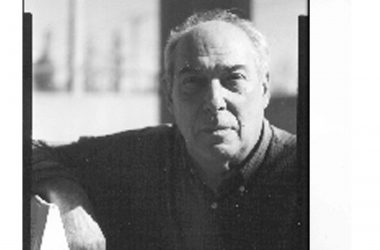By Noel Ignatiev
Until World War II, three-quarters of black Americans lived in the South, a “nation within a nation.” There, a system of color caste resting ultimately on legal and extra-legal terror maintained millions of Negroes (as the people of mixed African, European and Amerindian descent were then politely referred to) in semi-serfdom directly subject to the Lords of the Land, kept millions more working long hours for low wages in domestic service and extractive industries, and distorted the growth of a professional-entrepreneur class among them. The shadow of the plantation fell even over the North, where a color line operating largely apart from (although not usually against) the law restricted black people to the worst jobs, schools, and neighborhoods, beneath even the millions of poor whites ground under the heels of the Bosses of the Buildings. (“Lords of the Land” and “Bosses of the Buildings” were terms employed by Richard Wright in the text that follows.)
This in brief was the reality when 12 Million Black Voices came out, and, taking words and pictures together, never has a work of comparable length more powerfully and accurately depicted that reality. A great deal has changed since 1941, however, and it will be necessary to review some of the changes in order to assess the importance of the work to the modern reader.
The cotton fields of Mississippi have given way to the synthetic fiber plants of Indonesia, the black peasant has gone the way of the mule, and the Lords of the Land now speculate in shopping malls and tennis resorts. The black laborer has been replaced by the digitally-controlled, computer-operated robot in mine and mill, hearth and dock, killing floor and assembly line, and in an eerie, symbolic echo of the custom of Nation of Islam members, the United States Steel Corporation, once master of hundreds of thousands of black and white industrial proletarians North and South and mighty among the Bosses of the Buildings, has renounced its “slave name” and become USX, operator of restaurant and hotel chains employing mainly immigrants. In 1940 sixty percent of black women employed outside their homes were domestic servants; today very few are, a majority holding white-collar jobs.
There are now thousands of Afro-American millionaires. Of course a million dollars is not what it used to be, and there have always existed Afro-Americans of exceptional wealth; what is new is that many of them now operate outside the segregated Afro-American community. A recent magazine story profiled twenty black women who are senior executives in big corporations, including Xerox, Owens Corning, Kraft Foods, American Express, IBM, Blue Cross, Coca-Cola, and Johnson Publishing. Of the corporations, only the last-named is especially linked to black America. The women wield authority over budgets and revenues totaling more than $36 billion, and receive yearly compensations that range from $250,000 to more than $1 million. The only comparable figure in 1941 was Madam C.J. Walker, founder of the cosmetics empire, who made a fortune catering to a segregated market.
Black Americans now hold or have recently held positions on the Supreme Court, in the Cabinet, in Congress, as mayors of large cities, at the head of influential private foundations, and at the highest levels of the military. In 1996 a black man was widely touted as a candidate for President, and polls reported that if he ran he would be elected, by more white votes than black. These people exercise authority not merely over black people but over institutions that have been traditionally regarded as white.
Boston magazine touched off a flap by running a profile of Henry Louis Gates, Jr. under the headline “Head Negro in Charge.” Amidst all the controversy around the headline (which originally meant the slave who bossed the other slaves), hardly anyone pointed out that Gates is not a figurehead appointed by massa’ to rule over the other slaves, but an academic superstar, chairman of a department and research institute at Harvard boasting more floor space than any other, member of important university committees, one of Harvard Corporation’s most successful fundraisers, a frequent commentator in the press and over the airwaves about life in America. Certainly whites hired him, but he now makes decisions that affect the lives of black and white people.
Not so long ago, the only time a black man or woman was seen in a public space was with a mop; today black people stride through airports and corporate headquarters carrying briefcases and talking on cellular telephones. Black women and even black men, decked out in bright-colored nylon, jog along the Charles or the Hudson¾a far cry from the days when any black man running outside of darktown would be set upon by local guardians of the peace.
Perhaps the most visible and important sign of change is the black police officer. In 1940 there was not a single black policeman in any Deep South state and only a handful in northern cities; now there are black cops in major cities all over the country, and black police chiefs as well.
Racial oppression exists where color or some other arbitrary marker confers a status apart from that which grows out of occupation, wealth, language, age, sex, education, kinship or other traits that have in most parts of the world determined an individual’s social position. Racial oppression tends to level all those within the subordinate group (and elevate all those within the dominant group). Malcolm X captured its essence with his question, What does a white bigot call a black PhD? Answer: nigger.
By that standard, it must be admitted that race as a category has been eroded in the U.S. The black skin is no longer the badge of total degradation it once was. Before joining the celebrant chorus, people should remember that conditions have not improved for Afro-Americans in general.
Back in the days when the black “bourgeoisie” consisted of undertakers, makers and sellers of ointments for straightening hair, numbers bankers, and professionals serving a segregated market, they lived in the black community and exerted pressure on white authorities to maintain a certain minimum level of services to it. Now that they have moved out, the situation of those left behind is in many ways bleaker than before—neighborhoods of burned-out buildings and no stores, grown men standing on corners in the middle of the day, schools that are little more than warehouses, and torn-up streets that resemble nothing so much as Warsaw 1944. The number of black women and men in prison has grown faster than the number holding professional and managerial positions in predominantly white firms and agencies.
And notwithstanding Oprah Winfrey, Skip Gates, Michael Jordan, Colin Powell, and Bill Cosby, a black man still cannot get a taxicab in New York City. Some may dismiss the complaint as trivial—after all, many whites cannot afford to take taxicabs—but it has a special meaning because it is a reminder of the days when skin-color trumped money in the quest for status.
Could that day return? Probably not—history never runs backwards. But as Faulkner said, the past is never dead; it’s not even past. Much of the human population today consists of people who are useless for the production of wealth and an absolute drain on accumulation. Those people are different from the reserve army of labor of the past, useful for holding down wages and expanding production in times of economic growth. To capital—the impersonal personified that dominates the planet—they make up a permanent surplus population. The capitalist system organizes the production of death as it does the production of coal, computer chips, and cocaine. Nazism was not merely death but planned, systematic, organized death; it was the logical result of capitalist development, though its racial form was the product of the history and tradition of the place where it arose.
It is not difficult to imagine a U.S. equivalent. For the first time since they came to America, people of African descent are no longer as a group central to the production of wealth. 12 Million Black Voices contains a photograph of a lynching. The passions that used to motivate thousands of whites to travel miles to gather festively at such events are still there, repressed only temporarily by speech codes and other expressions of multicultural orthodoxy. It is certain that a major economic depression or comparable crisis would produce a movement to rid the country once and for all of the burden of race. Genocide is as American as cherry pie, and cries of genocide can no longer be dismissed as hyperbole, as evidenced most recently by the general failure across the political spectrum to register the absolute fall in the average life expectancy of black men.
Could a racially-motivated genocidal movement gain power, or even exist as a contender (as it does in various European countries), without affecting not merely the so-called underclass of black society but respectable sectors as well, those who many think have reached escape velocity? In that case, the work that follows would be of prophetic as well as historical value. De te fabula narratur!
Boston, September 2002



